Growing White Sapote in Hot, Dry Climates
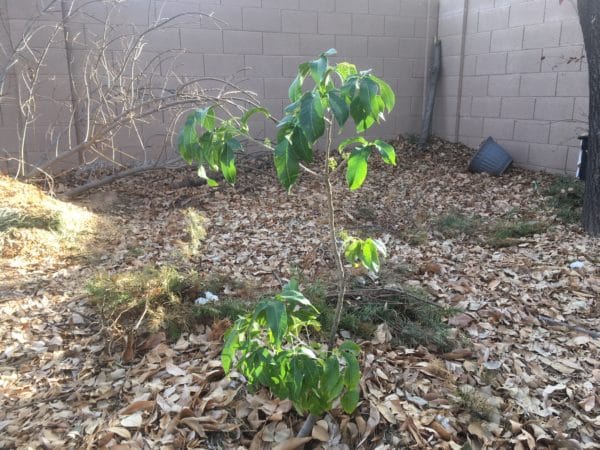
Strolling around the campus of Arizona State University a White Sapote tree can be found. When I discovered this tree it was loaded with fruit. I was lucky enough to sample one of the fruits and found it quite enjoyable. I believe this tree is from a seedling as no graft is present and it appears to be quite large. White Sapote is one of those fruits that tends to get overlooked. It’s related to citrus and citrus has a proven track record in hot desert climates. Although White Sapote prefers a more temperate climate, contrary to what some indicate, they can do very well in a desert climate producing good fruit.
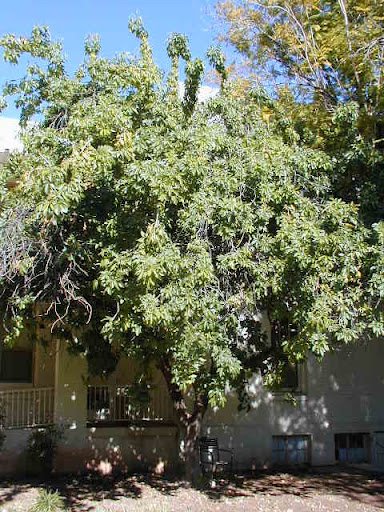
Suebelle White Sapote
I found a Suebelle White Sapote on clearance at a local big box store and decided to give it a try. I typically like to get my trees from more reputable places, but I just couldn’t pass it up. This tree has been an extremely slow growing tree. After a few years in the ground it doesn’t look a whole lot different from when I first planted it. This past winter it has started to flower and show more signs of growth. I’ve had concerns that it’s planted in a spot that gets too much shade and have flirted with the idea of transplanting it to a new location. I opened up the canopy of a large Ash tree to hopefully get it another hour or two of sunlight.
I’ve heard great things about the Suebelle variety as far as the fruit taste and its growth habit for backyard gardeners. White Sapote’s make for beautiful trees that maintain their leaves throughout the year. The Suebelle variety has slightly fuzzy backsides on the leaves, while other varieties have completely smooth leaves. The leaves can start to yellow and drop in June during our hottest and driest time of the year. I initially thought it was a watering issue, but discovered that this is quite common with White Sapote’s in our desert climate. They produce really small flowers starting around Jan and fruit ripens in Sept/Oct.
Fruiting
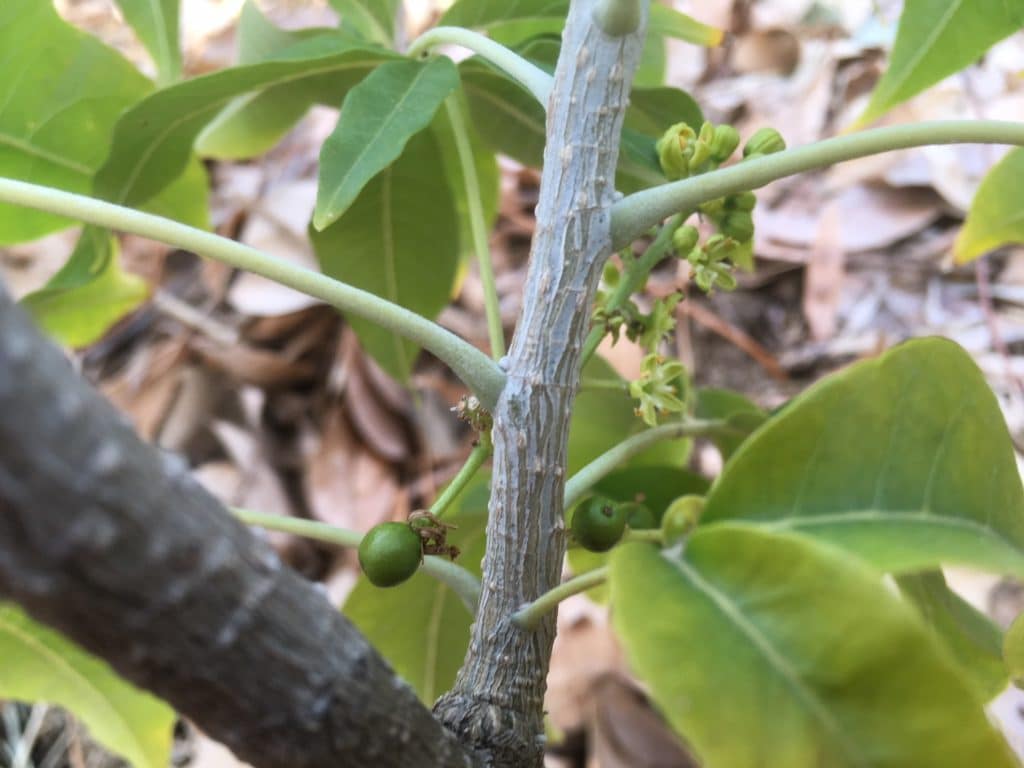
White Sapotes are generally about the size of a plum. In my opinion they have a taste of a banana, peach, and vanilla smoothie. They can be quite sweet and goes good in ice cream. When eaten overripe or too early they can have an unpleasant bitter taste. They really have to be picked at just the right time. It’s best to pick the fruit when they have started to slightly yellow and are soft to the touch. If they drop to the ground they can splatter. White Sapotes are very fragile fruits which make it a barrier for shipping and finding them in stores.
Gardening Skill Level
I would say that growing White Sapote in a hot, dry climate takes a moderate skill level. The tree will struggle in our intense sun while it is getting established its first couple years. Once the tree has had a few years to acclimate and has been able to start establishing a root system it can handle hot climates better. It does take a little effort to shade protect while young, but other than that it does pretty well. It handles light frosts with ease. I’ve been down to around 25 degrees Fahrenheit in my yard and have only seen some minor damage to new growth.
Suitable for Container Growing
White Sapote trees can get quite large. If you’d like to try growing a White Sapote tree in a container, try growing the Suebelle variety. Suebelle White Sapote’s grow slowly in our desert climate and is naturally one of the smaller varieties to grow. White Sapote seedlings grow a lot more rapid and aren’t as suited to container culture. I’ve seen some large White Sapote trees in my area and ideally they’re better suited for in-ground planting.
Planting Tips
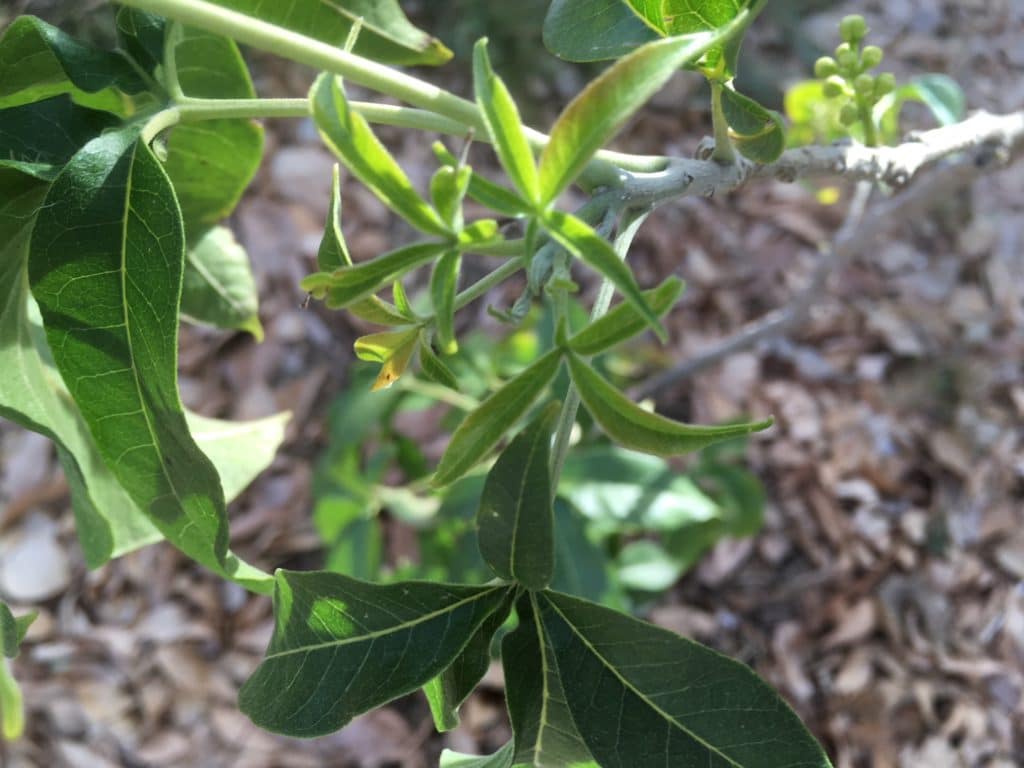
You’re going to want to place your White Sapote tree in an area that gets a good amount of sun. White Sapotes don’t seem that particular about the soil type. As long as it’s not just sitting in water you should be fine. The tree seems to tolerate our high PH clay soil.
Watering
I water my tree similar to a citrus, but a bit more frequent during the hot months. It’s best to water on a slow drip for several hours to get a deep soak. This will help prevent the salts from building up and will encourage the roots to grow deep into the soil. Avoid frequent shallow watering.
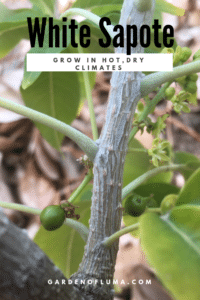
Feeding
White Sapotes are more sensitive to salt burn in our high PH soil. For this reason, I tend to stay away from synthetic fertilizers. You will start seeing tip burn when it’s getting too much salt intake. Periodically flush the soil with a deep watering to leech the salts away. The main things I use to feed my White Sapote are compost, fish fertilizer, and liquid seaweed/kelp. I tend to apply foliar applications as well. Here are my recommended products.
Sun Exposure
I have my White Sapote planted east facing with some large Ash trees behind it. It does get a lot of afternoon shade, but I don’t believe this is ideal after it’s more established. I’m trying to find ways to get it more sun by pruning back the Ash trees to see how that effects the growth this year. Other than the hottest couple months of the year, they like a good amount of sun. If you have a location that provides some afternoon shade for its first couple years, while allowing the tree to grow into more sun, that’s going to be the best spot.
Potential Problems
I occasionally pull aphids off my White Sapote, but rarely have seen any other pest problems. It seems virtually disease resistant and just a resilient tree overall. The tree can be fairly salt sensitive, so that is something to keep an eye on. Their are some struggles during our intense heat, otherwise, it hasn’t been a very fussy tree. My main issue is the slow growth. As long as you’re in a climate that doesn’t get temps below 25 degrees Fahrenheit, this tree should work great.
Please comment below on anything that you’ve enjoyed from this post or experience growing White Sapote.
